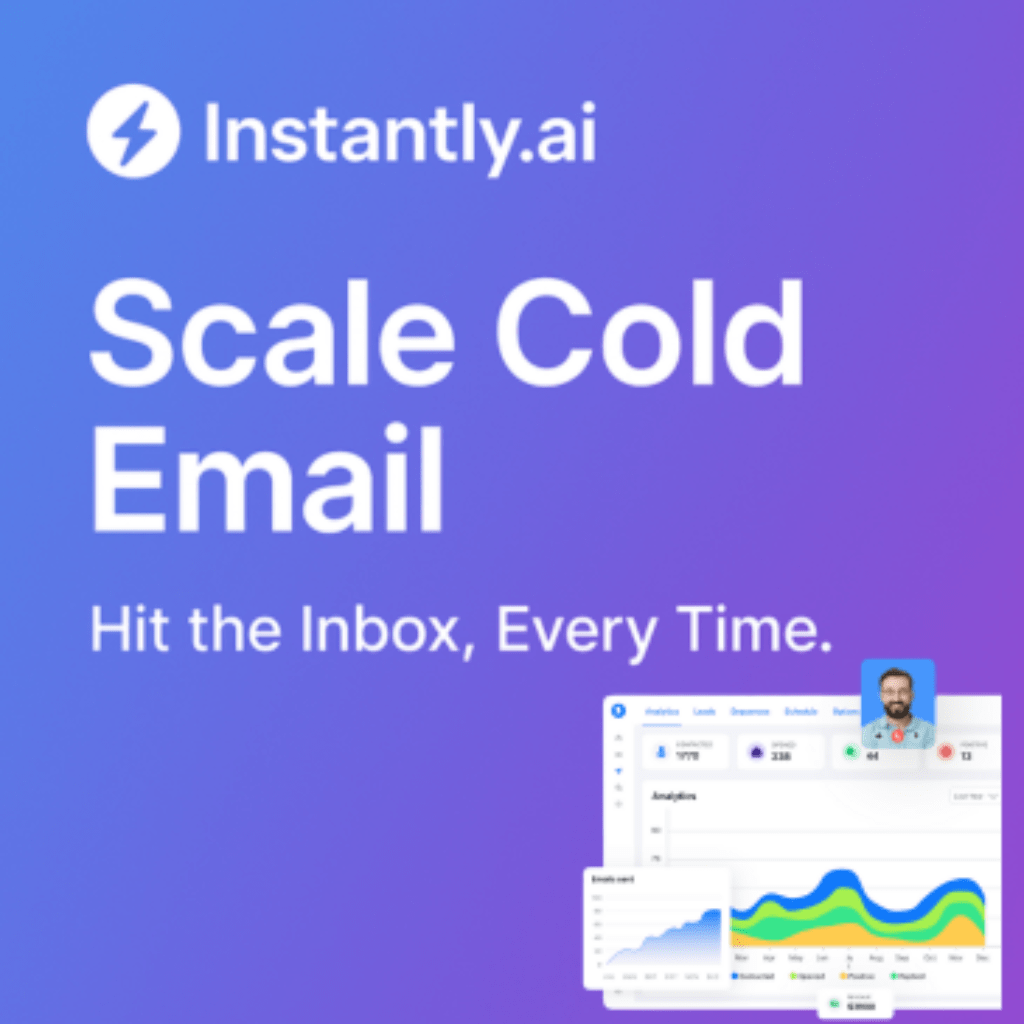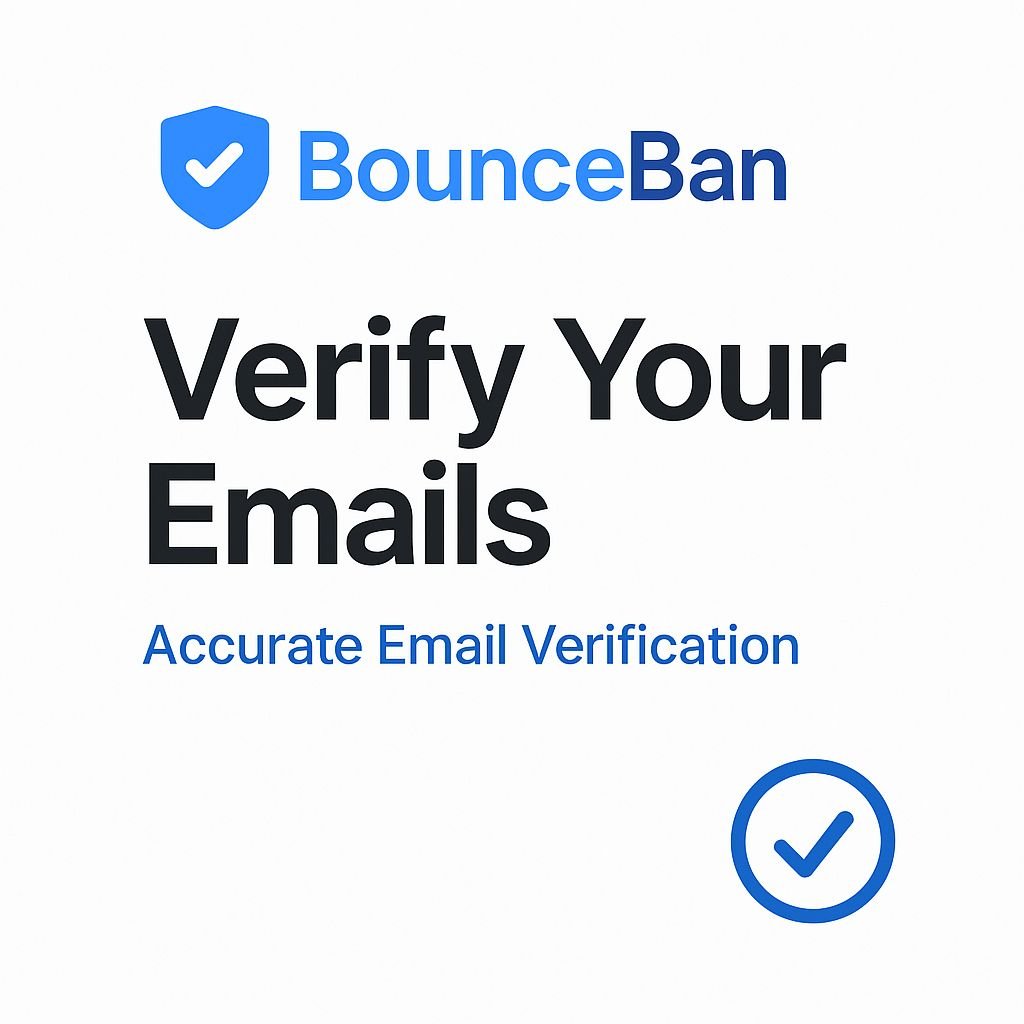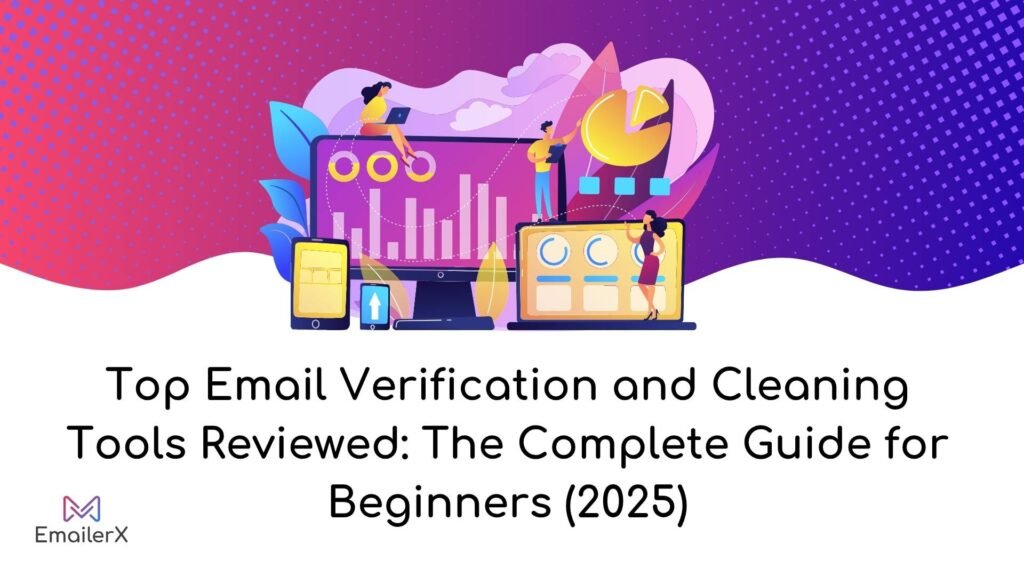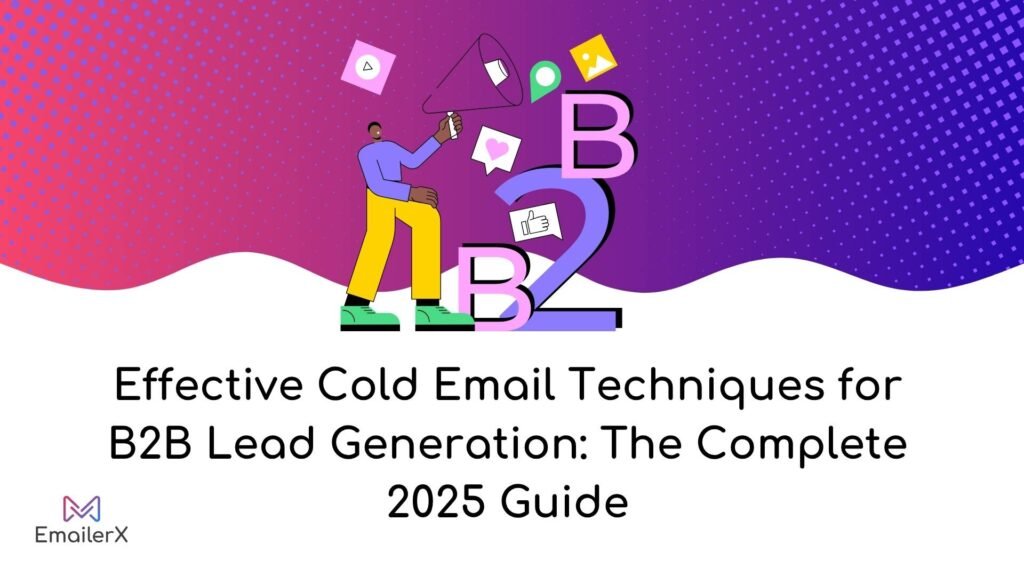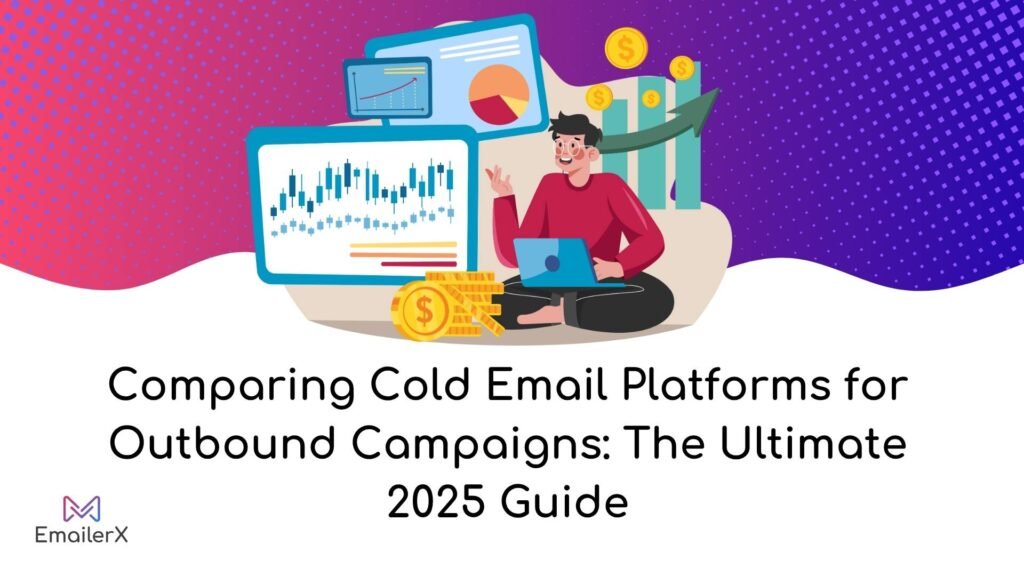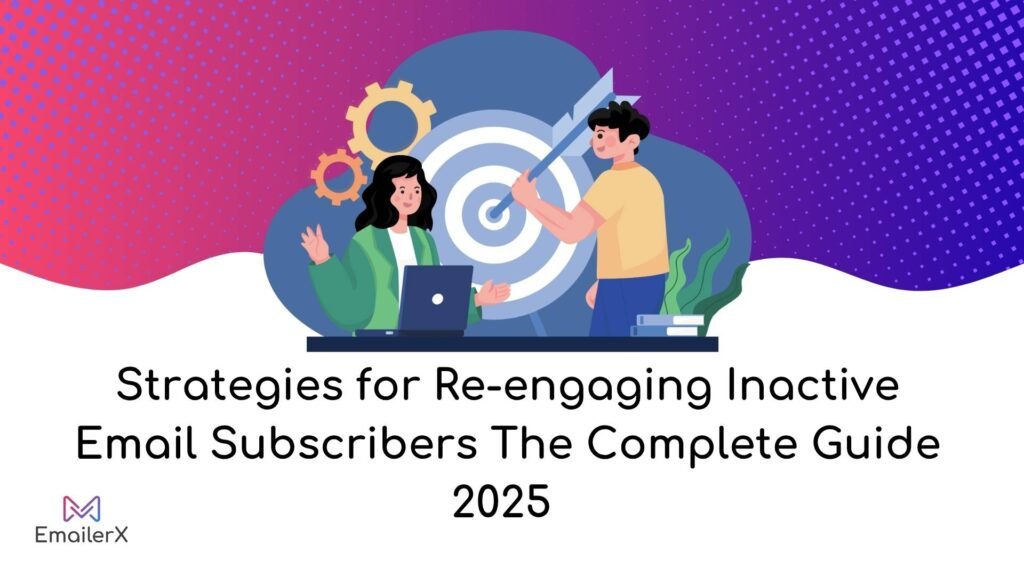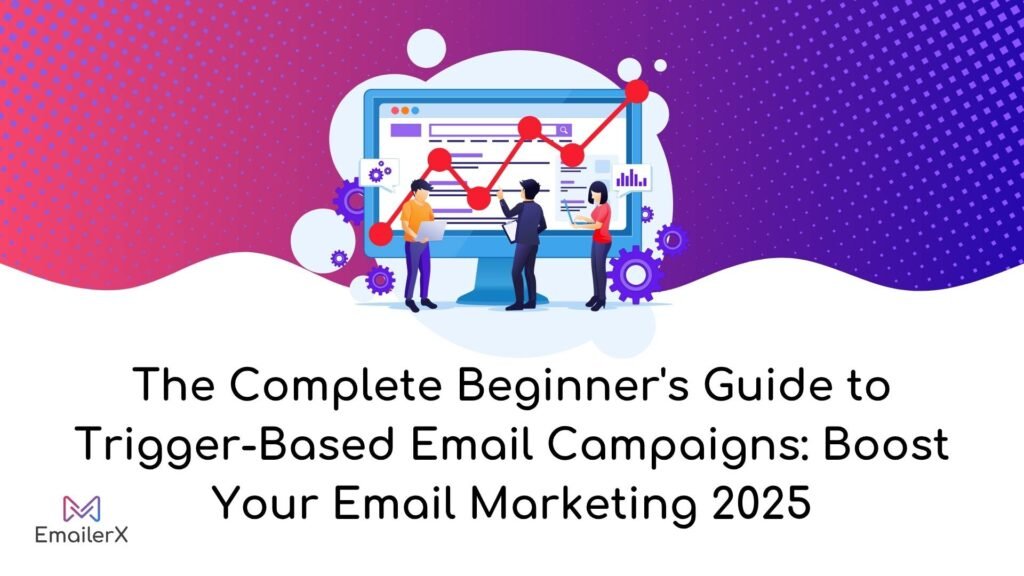In the ever-evolving digital marketing landscape, email remains the undisputed champion of ROI delivering an astounding 4,000% return according to the latest industry research.
Yet many businesses struggle to unlock email’s full potential, trapped in outdated “batch and blast” approaches that leave revenue on the table.
As inbox competition intensifies and AI-powered filters become increasingly sophisticated, the strategic selection of email campaign types has never been more critical to marketing success.
Whether you’re looking to boost conversions, nurture customer relationships, or reactivate dormant subscribers, understanding the right campaign architecture for your goals is essential.
Read To know What is Email Infrastructure? The Only Guide You Need to Know
In this comprehensive guide, we’ll explore 17 strategic types of email marketing campaigns that can revolutionize your strategy in 2025 and beyond.
From foundation campaigns that every business needs to advanced intelligence-driven sequences, you’ll discover how to implement these strategies to maximize engagement, conversions, and lifetime customer value.
Table of Contents
ToggleWhy Different Types of Email Marketing Campaigns Matter More Than Ever in 2025
The email marketing landscape has undergone a profound transformation in recent years. The days of sending identical messages to your entire list are long gone, replaced by sophisticated campaign architectures designed to deliver the right message to the right person at precisely the right moment.
This evolution has been accelerated by three key factors:
- AI-powered inbox filtering: Email providers now use machine learning to determine which messages deserve priority placement, making engagement metrics more crucial than ever
- Increasing consumer expectations: Today’s subscribers expect personalized, relevant content that addresses their specific needs and behaviors
- Deliverability algorithms: Technical factors like authentication are now table stakes, with engagement metrics becoming the primary driver of inbox placement
As MailerLite’s 2025 Email Marketing Benchmark Report reveals, emails segmented by behavior achieve 57% higher open rates and 152% higher click-through rates than unsegmented campaigns. The message is clear: strategic campaign architecture isn’t just nice to have it’s essential for survival in the modern inbox.
Part 1: Foundation Types of Email Marketing Campaigns Every Business Needs
Every successful email marketing program must begin with a solid foundation. These core campaign types form the backbone of your email strategy, establishing relationships with subscribers and creating opportunities for deeper engagement.
1. Welcome Email Sequences
Your welcome sequence represents your brand’s digital handshake the critical first impression that sets the tone for your entire customer relationship. According to data from Omnisend, welcome emails generate 4x the open rates and 5x the click-through rates of standard promotional campaigns.
Yet many businesses squander this opportunity with a single generic welcome message. The most effective welcome sequences follow a multi-touchpoint progressive disclosure framework that gradually introduces new subscribers to your brand:
Advanced Welcome Sequence Architecture:
- Immediate Welcome (Day 0): Confirmation of subscription, brand introduction, and clear next steps
- Value Delivery (Day 1): Deliver on your signup promise (lead magnet, discount code, etc.)
- Origin Story (Day 3): Share your brand’s mission, values, and differentiators
- Product/Service Introduction (Day 5): Highlight key offerings tailored to signup source
- Social Proof (Day 7): Feature customer testimonials, case studies, or reviews
- Engagement Question (Day 10): Solicit feedback to drive interaction and segment subscribers
Pro Tip: Tailor your welcome sequence based on acquisition source. Subscribers from a product-specific lead magnet should receive different content than those who joined from a general newsletter signup form.
2. Transactional Emails
Transactional emails order confirmations, shipping notifications, password resets represent a massive missed opportunity for many marketers. These operational messages achieve 8x the open rates of promotional emails, yet many brands fail to leverage this engagement for relationship building.
The secret to effective transactional emails lies in balancing operational information with strategic marketing content:
Transactional Upsell Architecture:
- Primary Content (70%): Essential transaction details (order confirmation, tracking number, etc.)
- Secondary Content (30%): Tasteful marketing elements including:
- Personalized product recommendations based on purchase history
- Loyalty program status and benefits
- Referral program incentives
- Educational content related to purchased products
Technical Implementation: Use dynamic content blocks that maintain deliverability by keeping the transactional information as the primary content while introducing marketing elements as secondary components.
3. Newsletters
Far from being outdated, newsletters have experienced a renaissance as consumers seek curated, valuable content in their increasingly crowded inboxes. The key is moving beyond the traditional “company news” approach to deliver genuinely useful information.
Content Framework: The 80/20 Value-to-Promotion Ratio
Successful newsletters follow a simple rule: provide at least 80% valuable, educational, or entertaining content with no more than 20% promotional material. This builds trust and positions your brand as a valuable resource rather than just another company pushing products.
Newsletter Segmentation Strategies:
- Interest-Based: Segment subscribers based on content preferences or past engagement
- Behavioral: Tailor newsletter content based on website browsing behavior
- Purchase History: Feature content relevant to products previously purchased
- Engagement Level: Send simplified, high-impact newsletters to low-engagement subscribers
Advanced Technique: Implement progressive personalization that increases content specificity as you gather more data about subscriber preferences and behaviors.
Part 2: Revenue-Generating Types of Email Marketing Campaigns
While relationship-building is important, revenue generation remains the ultimate goal for most email marketing programs. These campaign types directly impact your bottom line by driving conversions, increasing average order value, and bringing back inactive customers.
4. Abandoned Cart Recovery
With average cart abandonment rates hovering around 70%, effective abandoned cart email sequences represent one of the highest-ROI campaign types available to e-commerce businesses.
Multi-Stage Recovery Sequence Architecture:
- Reminder (1-3 hours after abandonment): Friendly reminder with clear CTA to complete purchase
- Problem Solver (24 hours): Address common objections and provide support
- Social Proof (48 hours): Showcase reviews/testimonials for abandoned products
- Incentive (72 hours): Offer time-limited discount or free shipping
Dynamic Discount Strategy: Rather than offering the same discount to everyone, tailor incentives based on customer value:
- First-time customers: Higher discount to overcome initial purchase barrier
- Repeat customers: Loyalty points or exclusive access instead of discounts
- High-value prospects: Premium incentives based on cart value
Technical Implementation: Integrate real-time inventory data to create urgency (“Only 3 left in stock!”) and social proof (“15 people purchased this item today”).
5. Post-Purchase Sequences
The customer journey doesn’t end at checkout. Strategic post-purchase email sequences can significantly increase customer lifetime value through cross-sells, upsells, reviews, and education.
Product-Specific Educational Sequences:
- Order Confirmation: Basic transaction details with anticipation building
- Shipping Notification: Tracking information with usage tips
- Arrival Check-In: Confirmation of delivery with setup guide
- Education Email: Detailed product tips based on specific purchase
- Cross-Sell Recommendation: Complementary products with customer stories
- Review Request: Strategically timed review solicitation
- Replenishment Reminder: For consumable products
Cross-Sell Mapping: Create product relationship maps that identify the most logical next purchases based on initial buy, allowing for highly relevant recommendations in post-purchase sequences.
Implementation: Optimize review solicitation timing by product category complex products warrant longer usage periods before requesting reviews, while simple items can be reviewed more quickly.
6. Win-Back Campaigns
Every database contains inactive subscribers who haven’t engaged or purchased in months. Strategic win-back campaigns can reactivate these dormant relationships, recovering revenue that would otherwise be lost.
Multi-Channel Reactivation Sequence:
- Reconnection Email: “We miss you” message with account highlights
- Value Reminder: Showcase new products/features since last engagement
- Feedback Request: Short survey about inactivity reasons
- Special Incentive: Strong, time-limited offer to encourage return
- Last-Chance Notice: Final attempt before implementing sunset policy
- Cross-Channel Integration: Coordinated social media and retargeting ads
Segment-Specific Incentive Structures:
- Previous high-value customers: Premium offers or exclusive access
- One-time buyers: Discount on previously purchased categories
- Subscribers who never purchased: Risk-free trial or first-time buyer special
Technical Implementation: Implement sunset policies that preserve deliverability by gradually reducing sending frequency to non-responsive subscribers before eventual suppression.
7. New Inventory/Product Launch Campaigns
Product launches represent high-opportunity moments to drive revenue through email. The most effective launch campaigns build anticipation through a carefully orchestrated sequence.
Pre-Launch Hype Sequence:
- Teaser Email: Mysterious hint at what’s coming
- Announcement: Official introduction with key benefits
- Deep Dive: Detailed feature exploration
- Social Proof: Early adopter testimonials or expert reviews
- Launch Day: Official availability announcement with clear CTA
- FOMO Creator: Limited availability or special launch offers
- FAQ Addressing: Common questions and objections
Advanced Technique: Implement early access tiering that rewards your most valuable customers with first access to new products, creating exclusivity while ensuring strong initial sales.
8. Seasonal and Promotional Campaigns
Holiday and seasonal promotions drive significant revenue for most businesses, but generic “20% off everything” emails rarely maximize potential. Strategic promotional campaigns require careful planning and execution.
Promotion Sequence Architecture:
- Early Announcement: Exclusive preview for loyal customers
- Official Announcement: Public promotion launch with clear details
- Benefit Highlight: Focus on specific benefits beyond discounts
- Social Proof: Customer reviews or purchase statistics
- Urgency Creator: Countdown timer or limited inventory alert
- Last Chance: Final reminder before promotion ends
Technical Implementation: Use dynamic countdown timers and inventory scarcity indicators to create genuine urgency that drives immediate action.
Part 3: Relationship-Building Campaign Types
While revenue-focused campaigns drive immediate sales, relationship-building campaigns create the foundation for long-term customer value. These campaign types strengthen emotional connections to your brand, increasing loyalty and advocacy.
9. Educational Email Sequences
Educational content builds trust, establishes authority, and keeps your brand top-of-mind between purchases. Effective educational sequences deliver value while subtly positioning your products as solutions.
Knowledge Gap Assessment Framework:
- Identify common customer questions and challenges
- Map questions to different stages of the customer journey
- Create educational content that bridges knowledge gaps
- Subtly connect educational content to relevant products/services
Progressive Complexity Implementation:
Begin with foundational concepts and gradually introduce more advanced topics, moving subscribers through a curriculum that builds their knowledge while deepening their relationship with your brand.
Advanced Technique: Incorporate interactive elements like quizzes, calculators, or assessments to boost engagement and collect valuable data on subscriber needs and interests.
10. Loyalty Program Campaigns
Effective loyalty campaigns go beyond points notifications to create emotional connections and status motivation. The most successful loyalty email programs make customers feel valued and incentivize continued engagement.
Status Progress Notification Architecture:
- Welcome to Loyalty: Program introduction and immediate benefits
- Progress Updates: Regular notifications of points/status accumulation
- Level-Up Celebrations: Special recognition when reaching new tiers
- Exclusive Access: Special events or products for loyalty members
- Personalized Rewards: Tailored incentives based on purchase history
- Milestone Celebrations: Recognition of loyalty anniversaries
VIP Campaign Structures:
Create exclusive campaign tracks for your highest-value customers with personalized attention from team members, early access to new products, and custom appreciation gifts that strengthen emotional bonds.
11. Milestone and Anniversary Campaigns
Milestone campaigns recognize the important moments in your customer relationship, creating emotional connections that drive loyalty and advocacy. These timely, personalized messages demonstrate that you value the relationship beyond transactions.
Customer Relationship Milestone Mapping:
- Account creation anniversary
- First purchase anniversary
- Cumulative purchase thresholds
- Birthday/personal milestones
- Loyalty program anniversaries
- Usage milestones (for SaaS/subscription)
Advanced Strategy: Create personalized timeline visualizations that show customers their journey with your brand, highlighting meaningful interactions and achievements.
Technical Implementation: Implement dynamic milestone tracking that automatically triggers appropriate celebration emails when customers reach significant thresholds.
12. Community Building Campaigns
Community campaigns transform individual customer relationships into a collective experience, creating belonging and identity around your brand. These campaigns encourage interaction not just between brand and customer, but among customers themselves.
User-Generated Content Solicitation Sequences:
- Inspiration Email: Showcase previous customer content
- Clear Request: Specific UGC invitation with simple submission process
- Incentive Offer: Reward for participation (features, discounts, etc.)
- Celebration: Recognition of contributors
Challenge and Participation Campaign Structures:
Create time-bound challenges that encourage customers to engage with your products and share their experiences, fostering community while generating valuable content for future marketing.
Part 4: Advanced Intelligence-Driven Campaign Types
The future of email marketing lies in intelligent, data-driven campaigns that respond to individual behaviors and preferences. These advanced campaign types leverage real-time data and predictive analytics to deliver hyper-relevant messages.
13. Behavioral Trigger Campaigns
Behavioral triggers represent the cutting edge of email marketing, using real-time actions to deliver perfectly timed, contextually relevant messages.
Behavioral Intelligence Framework:
- Identify high-value behavioral triggers on website/app
- Create tailored messaging specific to each trigger
- Implement real-time activation based on action completion
- Develop progressive sequences based on response
Cross-Channel Behavior Triggering:
The most sophisticated systems monitor behaviors across multiple channels (website, mobile app, in-store, social media) to create a unified view of customer activity that informs email triggers.
Technical Implementation: Create a real-time behavior integration architecture that captures events through API connections and immediately activates appropriate email messaging.
14. Browse Abandonment Campaigns
Browse abandonment campaigns target users who viewed specific products but left without adding to cart a population typically 5-10 times larger than cart abandoners.
Category vs. Product-Specific Abandonment Sequences:
- Product-Specific: Triggered when visitor views multiple pages of a single product
- Category Browse: Activated when visitor browses multiple items in same category
- Search Abandonment: Targeted to visitors who performed on-site searches
Timing Optimization:
Send product browse abandonment emails within 1-3 hours while interest is fresh, but delay category browse emails by 24 hours to avoid appearing too intrusive.
15. Predictive Reordering Campaigns
Predictive campaigns anticipate customer needs based on purchase history, consumption patterns, and behavioral signals. These proactive messages deliver convenience while driving consistent repurchase behavior.
Consumption Pattern Analysis Framework:
- Track average usage time for consumable products
- Identify individual consumption patterns through purchase frequency
- Create predictive models that account for seasonal variations
- Trigger proactive reordering reminders just before anticipated depletion
Advanced Strategy: Incorporate external factors like weather events or seasonal patterns to further refine predictive timing.
16. Cross-Channel Coordination Campaigns
Email doesn’t exist in isolation. The most effective campaigns coordinate email messaging with other channels to create seamless customer experiences that reinforce your message across touchpoints.
Channel Preference Identification Sequences:
Use engagement data to determine each customer’s preferred channels, then orchestrate campaigns that prioritize those channels while providing consistent messaging across secondary touchpoints.
Advanced Strategy: Implement location-aware email deployments that coordinate with physical store visits or event attendance, bridging digital and real-world experiences.
17. Cold Email Outreach Campaigns (For B2B)
For B2B companies, strategically designed cold email sequences remain one of the most effective ways to generate qualified leads. The key is moving beyond generic outreach to create personalized, value-focused sequences.
Research-Based Personalization Technique:
- Identify prospect-specific challenges through research
- Create tailored opening emails referencing specific details
- Provide immediate value through relevant insights or resources
- Suggest logical next steps based on observed business needs
Micro-Commitment Sequence Implementation:
Rather than immediately pushing for meetings, build campaigns around small, easy-to-accept commitments that gradually increase engagement:
- Value Delivery: Useful resource with no strings attached
- Engagement Request: Simple question or feedback request
- Micro-Commitment: Low-effort action (quick poll, download)
- Logical Next Step: Meeting or demo invitation
Technical Implementation: Protect your domain reputation with proper authentication, gradual sending ramp-up, and engagement-based sending rules.
Implementation Guide: Selecting the Right Campaign Types for Your Business
With 17 campaign types to choose from, determining where to focus your efforts can feel overwhelming. The secret to success lies in selecting the right campaigns for your specific business needs, resources, and technical capabilities.
Identifying Priority Campaign Types
Start by aligning campaign types with your primary business objectives:
| Business Objective | Priority Campaign Types |
| New Customer Acquisition | Welcome Sequences, Cold Outreach (B2B) |
| Conversion Rate Improvement | Abandoned Cart, Browse Abandonment |
| Customer Retention | Post-Purchase, Loyalty, Milestone |
| Revenue Expansion | Cross-Sell, Predictive Reordering |
| Reactivation | Win-Back, Re-Engagement |
Next, assess your available resources and technical capabilities to ensure successful implementation:
- Email Platform Capabilities: Ensure your ESP supports the automation and personalization required
- Data Availability: Confirm you can capture the necessary triggers and behaviors
- Content Creation Resources: Realistic assessment of your capacity to produce required assets
- Technical Implementation Team: Support for integration and maintenance
Campaign Orchestration Strategy
Effective email marketing isn’t just about individual campaigns but how they work together to create cohesive customer experiences.
Campaign Interdependence Mapping:
- Create a visual flowchart showing how campaigns interact
- Identify transition points between different campaign types
- Ensure consistent messaging across campaign boundaries
- Establish priority rules for subscribers eligible for multiple campaigns
Frequency and Timing Optimization:
- Implement global frequency caps to prevent over-messaging
- Create send-time optimization based on individual engagement patterns
- Establish suppression rules to prevent campaign collision
- Develop preference centers that allow subscribers to control frequency
Measurement Framework
Sophisticated campaign architecture requires equally sophisticated measurement to evaluate performance and guide optimization.
Campaign-Specific KPI Selection:
Each campaign type should be evaluated based on appropriate KPIs:
- Welcome Sequences: Completion rate, first purchase conversion
- Abandoned Cart: Recovery rate, average recovered order value
- Educational Sequences: Engagement depth, support ticket reduction
- Win-Back: Reactivation rate, reactivated customer value
Attribution Modeling:
Implement multi-touch attribution that acknowledges the role of different campaign types in the customer journey, avoiding oversimplification that credits only the last touch.
Incrementality Testing:
The true measure of campaign effectiveness is incremental impact what happens because of the campaign that wouldn’t have happened otherwise. Implement holdout testing to measure true incremental value.
Tools for Implementing Advanced Email Campaigns
Several powerful tools can help you implement these advanced campaign types:
- ActiveCampaign – Excellent for behavior-based automation with powerful CRM integration
- Klaviyo – Specialized for e-commerce with robust predictive analytics
- HubSpot – Strong B2B capabilities with seamless CRM integration
- Omnisend – Great for e-commerce with pre-built automation workflows
- Drip – Powerful segmentation and personalization for e-commerce
Note: Some of the links above are affiliate links, which means we may earn a commission if you choose to purchase through them. This comes at no additional cost to you and helps support our content creation.
Conclusion: The Compounding Effect of Strategic Campaign Implementation
The power of advanced email campaign architecture doesn’t come from any single campaign type but from their combined impact over time. As you implement these strategic campaigns, you’ll create a system that continuously nurtures relationships, drives revenue, and builds lasting customer value.
Begin by assessing your current email program against these 17 campaign types, identifying gaps and opportunities for enhancement. Start with the foundation campaigns that every business needs, then gradually expand into more advanced types as you build capabilities and resources.
Remember that email marketing excellence is a journey, not a destination. Continuous testing, optimization, and evolution of your campaign architecture will ensure you stay ahead of changing customer expectations and competitive pressures.Ready to transform your email marketing ROI? Contact our team at Inboxist for a personalized email strategy consultation. Our experts can help you implement these advanced campaign types and unlock the full potential of your email marketing program.
Frequently Asked Questions
What are the 4 types of email marketing?
The four fundamental types of email marketing are:
1) Promotional campaigns that directly advertise products or services, 2) Relationship-building campaigns that nurture customer connections,
3) Transactional emails that confirm customer actions, and
4) Automated behavioral campaigns triggered by specific customer actions.
A comprehensive email strategy incorporates all four types to address different stages of the customer journey.
What are the 7 types of emails?
The seven essential email types for any marketing program include:
1) Welcome emails,
2) Promotional campaigns,
3) Newsletters,
4) Abandoned cart recoveries,
5) Post-purchase sequences,
6) Loyalty communications, and
7) Re-engagement campaigns.
Each serves a specific purpose in the customer lifecycle, from initial introduction to long-term relationship maintenance.
What are the best automated email campaigns?
The highest-performing automated email campaigns typically include abandoned cart sequences, welcome series, post-purchase follow-ups, and browse abandonment emails. These automation types consistently deliver strong ROI because they reach customers at critical decision points with highly relevant, timely content that addresses specific needs and behaviors.
How often should I send marketing emails?
Optimal sending frequency varies by industry, audience, and email content quality. Rather than following generic guidelines, implement preference centers allowing subscribers to choose their frequency, conduct frequency testing with different segments, and closely monitor engagement metrics to identify potential fatigue. Most successful B2C brands send 2-4 emails weekly, while B2B typically maintains a 1-2 weekly cadence.
What are triggered email campaigns?
Triggered email campaigns automatically deploy based on specific customer actions or behaviors rather than manual sending or predetermined schedules. Common triggers include website browsing, cart abandonment, purchase completion, or engagement milestones. These campaigns deliver 5-8 times higher engagement rates than batch campaigns because of their exceptional relevance and timing.
What are the best practices for email marketing campaigns?
Key email marketing best practices include: segmenting your audience for relevance, creating mobile-responsive designs, writing compelling subject lines, personalizing content beyond just names, maintaining list hygiene, testing continuously, focusing on value over promotion, and implementing proper deliverability protocols. Following these practices will significantly improve campaign performance across all metrics.
What types of emails have the highest open rates?
Transactional emails consistently achieve the highest open rates (40-60%) because they contain information customers actively expect. Following closely are triggered behavioral emails like cart abandonment (30-50%), personalized milestone emails (35-45%), and well-crafted welcome emails (30-40%). All significantly outperform standard promotional campaigns (15-25%) due to their enhanced relevance and timing
How do I create an effective email marketing campaign?
Create effective email campaigns by:
1) Defining clear objectives,
2) Segmenting your audience for relevance,
3) Crafting compelling subject lines and preview text,
4) Designing mobile-optimized templates,
5) Writing concise, benefit-focused copy,
6) Including clear calls-to-action,
7) Testing all elements before sending, and
8) Analyzing results to inform future campaigns.
Success comes from consistently delivering value that aligns with subscriber expectations.


